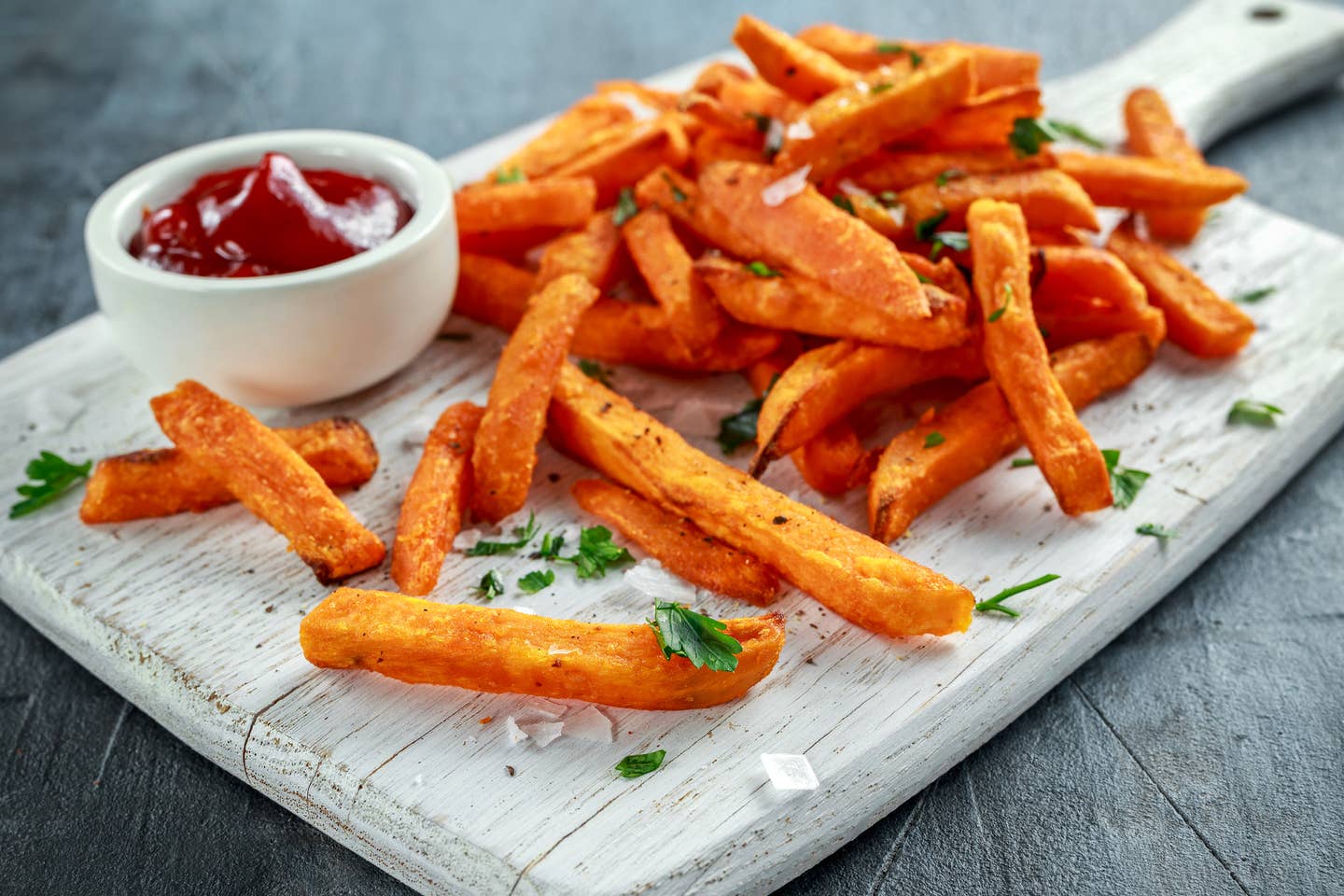
The Secret to Eating Carbs and Losing Weight, According to a Dietician
If I had a penny for every time I heard, “I’ve been trying to cut back on carbs to lose weight” in my practice, I would be rich. Carbohydrates seem to be a diet scapegoat of the decade. But as I explain to my clients, don't blame carbs since not all carbs are created equal. Let’s discuss the topic of carbohydrates and weight loss and end carb confusion once and for all. I plan to answer all your carb questions, like: Do you need to cut carbs to get to your ideal weight? What about sugar? (Which is worse?) Buckle up. The answers may surprise you.
What Are Carbohydrates?
Carbohydrates are essential nutrients that your body turns into glucose, which is our primary source of fuel. They are one of three macronutrients (aka macros), and as you probably know, the other two macros are fat and protein. Our body obtains energy from all three macronutrients and all three are essential for proper body functioning. These macronutrients must be obtained through diet – the body cannot produce them on its own.
The Function of Carbohydrates
Carbohydrates have the following roles:
- Energy Production: As mentioned, carbohydrates are our preferred source of energy. They provide fuel for our brain and for our muscles when they are working.
- Protein Sparing: Carbohydrates also prevent protein from being used as a fuel source – also known as "protein sparing." Protein can provide energy, however, protein has many important functions in the body. Having enough carbohydrates in your diet allows the protein to do its other jobs.
- Energy Storage: Carbohydrates can be converted to glycogen, which is the storage form of glucose. Glycogen can then be converted to glucose and used for energy when needed.
- Aid in Digestion: Fiber is a type of complex carbohydrate that helps with the elimination of waste products from your body.
Where are Carbohydrates Found
We tend to look at all carbohydrates as if they’re all the same. This can’t be further from the truth. Let me break down the differences, as we learn the nuances of how they get broken down in the body!
Carbohydrates can be simple or complex, depending on their structure
A simple carbohydrate is one or two sugar molecules linked together. Simple sugars include glucose, fructose, galactose, lactose, maltose and sucrose. They include table sugar.
Complex carbohydrates, on the other hand, have three or more simple sugars strung together. This includes fiber and starch. During digestion, your body breaks down those complex carbohydrates into simple sugars, so your cells can use these for energy. But this is an involved process, and like untying knots, it can take time, so the energy is released gradually, meaning your body doesn't experience the same sugar surge as with simple carbs.
Carbs Fall into Three Main Categories
Dietary carbohydrates have three main categories, some complex and some simple
- Sugar (simple) – can be naturally occurring or added into food products
- Starches (complex) – are starchy vegetables like potatoes, rice, or whole grains
- Fiber (complex) – unlike starches, we cannot break down fiber or get energy from fiber but it is vital for our gut bacteria. Fiber is only occurring in plant-based foods.When you’re reading the nutrition label of a food, understand that the total amount of carbohydrates on the label reflects the total amount of sugar, starch, and fiber in the food product.
Which Carbohydrates Are the Healthiest
Now that we’ve discussed the different types of carbohydrates, let’s take a closer look at how they’re used in the body and their impact on our health, energy levels, and weight.
Let’s start with comparing an apple to a soda. The soda contains simple sugars and would also be considered “added” sugars. Your body will digest the soda very quickly and easily, leading to a quick release of glucose into your blood. Compare that to an apple, which also contains simple sugars (naturally occurring), but in addition, it also contains fiber. Fiber slows down the digestion of those simple sugars, resulting in a slower release of glucose into your bloodstream. That means you burn slow and steady, are less hungry, and your blood sugar stays steady.
Now, let’s throw foods with higher starch contents into the mix. If you were to consume plain white soda crackers, for example, you would actually get a similar blood sugar response to that of the soda. The lack of fiber in the crackers determines the blood sugar response.
The measure of how much a food raises the sugar level in our blood is called the Glycemic Index. Foods that are higher in glycemic index, are digested quickly and result in a large spike in our blood sugar. This triggers a large insulin response – insulin is the hormone that lets sugar into our cells. Too much blood sugar and the cells are overflowing, and the extra fuel has to be stored so your body sends it into fat storage.
A diet high in high glycemic index carbohydrates can make weight loss difficult over time. Why?
- It can lead to insulin resistance (more on that here) which can make weight loss difficult
- We do not feel as full after eating something processed as we do when we eat fiber
What matters most for weight loss is getting into a calorie deficit. We will be more satisfied after eating high fiber, low glycemic index, whole carbohydrate-containing foods. We won’t want to overconsume them either! However, overconsumption is certainly likely when we are eating mostly processed, high glycemic index carbohydrate foods – and that’s when weight gain occurs.
Therefore, the whole notion that “carbs cause weight gain” likely has more to do with certain types of carbohydrates that tend to be overconsumed, which leads to an increased caloric intake and weight gain. You're unlikely to eat too many starchy vegetables, but crackers? Yes.
How To Pick Your Carbohydrate Moving Forward:
- Fiber Rules! – Fiber is wonderful for digestion, for fullness, for our heart health–and many more benefits! Make sure you’re hitting your daily fiber target of at least 25 grams or more of fiber daily. Where do we get fiber? Plants No animal foods contain fiber.
- Eat Whole Food Carbs – One great first step is to start by eating lots of plant foods. Now, let’s make sure you’re eating the right ones: Load up on those plant-based foods that have undergone minimal processing and are close to how they grew in the ground. You win with whole foods because not only is the fiber still intact, you also get the micronutrient benefits as well – antioxidants, vitamins, minerals, and plant pigments that your body needs to build a healthy immune system and fight off aging and disease!
- Watch For Added Sugars - Read labels and try to pinpoint any added sugars in products that you consume. Added sugars will likely increase the glycemic index and calories of the product and also indicates that the product has been processed.
For healthy weight loss, find carbs that are from the plant-based foods groups: Vegetables, fruits, legumes, whole grains (minimally processed), nuts, and seeds. And eat as many fiber-filled foods as you can!
More From The Beet






